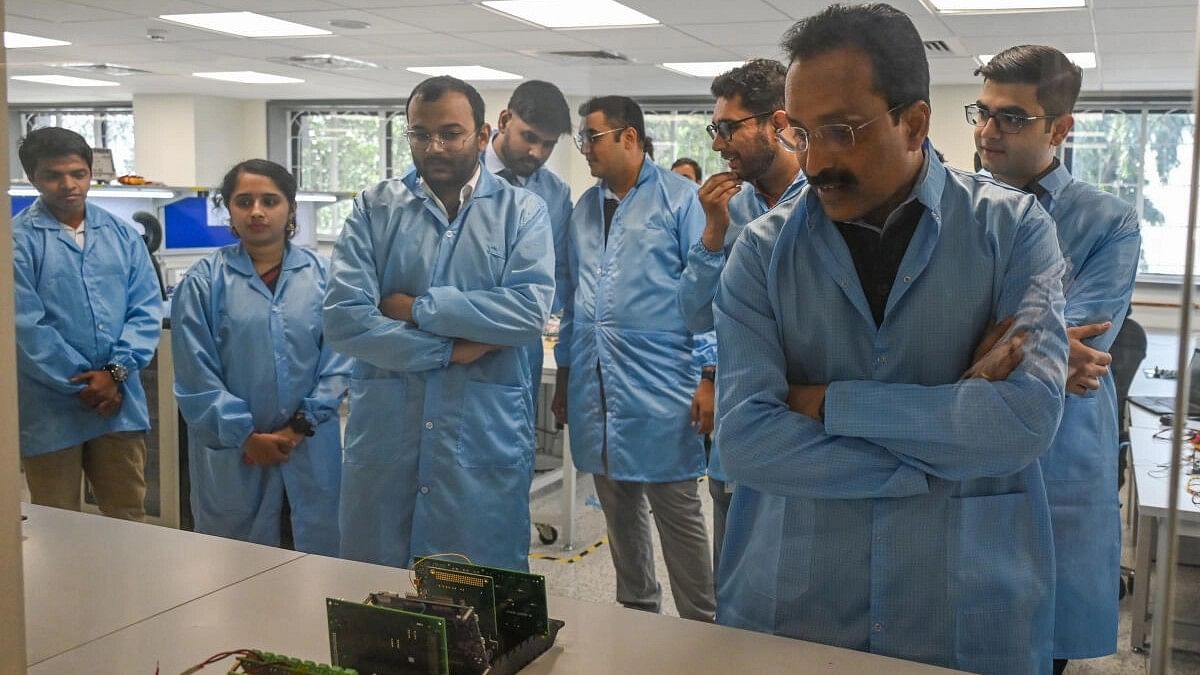
ISRO Chairman S Somanath during his visit to Pixxel's new Assembly, Integration and Testing facility in Bengaluru on Monday.
Credit: DH Photo/ S K Dinesh
Bengaluru, DHNS: Space data company Pixxel aims to launch six of its hyperspectral imaging satellites, named Fireflies, by June this year.
Pixxel founder and CEO Awais Ahmed told reporters on Monday that the fireflies are being built at its new 30,000-sq ft Assembly, Integration and Testing facility in HBR Layout here.
He was speaking on the sidelines of the formal inauguration of the facility, by ISRO chairman S Somanath. Co-founded by Awais Ahmed and Kshitij Khandelwal in 2019, Pixxel is building a constellation of hyperspectral earth imaging satellites.
“The plan in 2025 is to build on these six and expand by another 18, for a total of 24 satellites. Through these six satellites, we are trying for global coverage with a daily revisit. With 24 satellites forming a constellation, we can cover the entire global landmass every day,” Ahmed said.
Three operational satellites launched by Pixxel during 2021 and 2022 have been beaming down data. The space startup is planning to follow the fireflies up with its larger satellites with advanced capabilities – honeybees – in October. Ahmed said the company is still evaluating the options for the locations of these launches.
Hyperspectral imaging captures light in hundreds of wavelengths. Each pixel in the image comes with a spectrum of its own, helping the user study the subject significantly closer than through conventional imaging techniques.
Data provided by the hyperspectral imaging satellites can substantially enhance capabilities in the agriculture, energy, and environment sectors. The technique helps improve applications including the mapping of natural resources.
The new facility, at full capacity, can handle more than 20 satellites simultaneously, with a six-month turnaround. It has two clean rooms of ISO Classes 7 and 8 that safeguard against contaminants that could impair the functionality of satellites during assembly and integration.
While the company works with supply chains from 26 countries, half of the components of these satellites are indigenously built and designed, Ahmed said.
Pixxel is also set to launch Aurora, its geospatial analytics platform that analyses satellite imagery for customers, by the middle of this year.
Gearing up for Gaganyaan
ISRO Chairman S Somanath said the space agency is set to launch “at least one” unmanned mission under the Gaganyaan programme during 2024. Two test vehicle missions to demonstrate abort scenarios will follow.
In October 2023, ISRO conducted the first flight test vehicle abort mission (TV-D1) that demonstrated and evaluated the crew escape system.
“We’ll have to do some of the helicopter drop tests that demonstrate the parachute systems, and a pad abort test which simulates a launchpad failure. We’ll also be developing many systems including the life support system. This is the overall scope of work in Gaganyaan this year,” he told reporters.
Gaganyaan, ISRO 's human spaceflight programme, is scheduled for a 2025 launch.